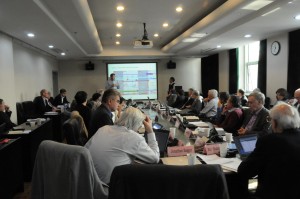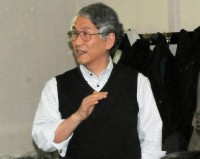The International Linear Collider Steering Committee (ILCSC), a subcommittee of the International Committee for Future Accelerators (ICFA) that provides scientific oversight for the Global Design Effort (GDE), met in Beijing on 17 February 2011. Of special interest at this meeting were discussions of the future of the efforts towards the ILC, after the ILC Technical Design Report (TDR) is completed at the end of 2012. The mandate for the GDE will be completed once the report is submitted and accepted. Plans are being developed for carrying forward the preparations for the ILC in a new organisational structure to continue the enabling R&D, evolve the accelerator and detector designs, and respond to LHC results.
Beijing has been the setting for some of the most important milestones in planning a linear collider, beginning in 2004 when a special panel recommended to ICFA in Beijing that the ILC design should be based on superconducting radiofrequency technology. The GDE was created to carry out that design and that has resulted in our reference design, documented in a Reference Design Report presented to the ILCSC in Beijing in 2007. Therefore, it seemed highly appropriate that the crucial discussions for planning the long-term efforts for planning the ILC were once again carried out in Beijing.
Jon Bagger chaired a very busy February ILCSC meeting, which covered GDE progress and plans and dealt with the post-2012 era of the ILC. We presented our progress towards establishing the baseline for the technical design that will be carried out over the next two years leading to our final deliverable, the TDR.
Lyn Evans reported for the Program Advisory Committee, the technical subcommittee of the ILC, on their autumn review of GDE progress and plans. He characterised their review by saying that the “PAC was very impressed by the progress being made on the accelerator and detectors, and also by the increasing ILC-CLIC collaboration activities.” He also noted some of their key suggestions, especially with regard to developing cost-effective mass production of the SCRF main linac.
Regarding the post-2012 planning, a wide-ranging discussion was carried out beginning with a presentation led by Atsuto Suzuki (KEK). Various models for a new organisation to follow the GDE are being discussed. The initial idea was to form a multi-lab partnership in order to carry out the future work within existing and funded programmes of the laboratories. However, it became clear in the discussions that the partnership should be flexible enough to exist between entities that are best suited for each country or region.
In the ILCSC discussions, we emphasised what we believe are the key elements of the GDE that must be preserved in a new post-2012 organisation. First and foremost, the key technical people involved in developing both the enabling technologies and the accelerator designs need to be able to remain involved as the effort moves forward. Perhaps equally as important for whatever organisation replaces the GDE will be the continuation of its ability to set global priorities and to make key decisions that have been accepted worldwide.
Although we have a lot of work before us in developing the ILC technical design and report over the coming two years, now is not too soon to begin serious planning for what will happen once that task is accomplished and the mandate of the GDE is completed. We hope the discussions at ILCSC will lead to a well conceived plan for the post-2012 era.





Recent Comments